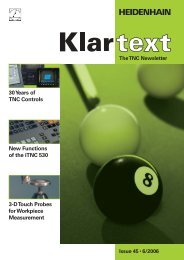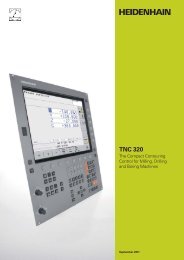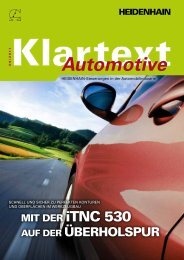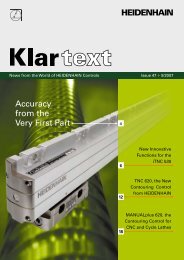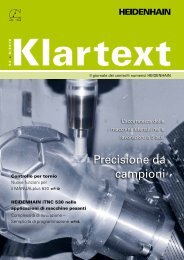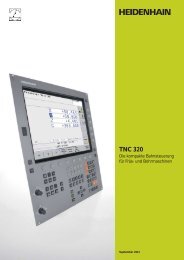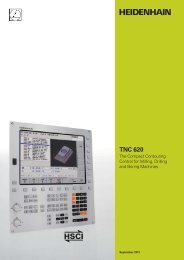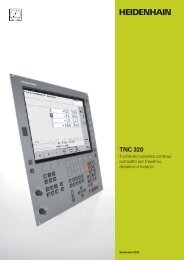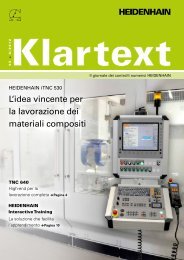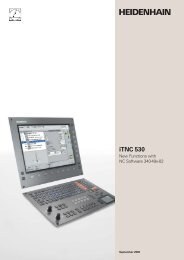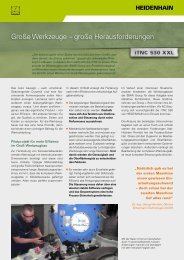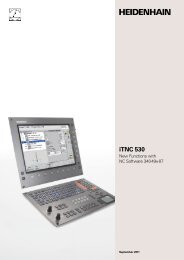iTNC 530 - TNC 640 - DR. JOHANNES HEIDENHAIN GmbH
iTNC 530 - TNC 640 - DR. JOHANNES HEIDENHAIN GmbH
iTNC 530 - TNC 640 - DR. JOHANNES HEIDENHAIN GmbH
You also want an ePaper? Increase the reach of your titles
YUMPU automatically turns print PDFs into web optimized ePapers that Google loves.
Programming in the Workshop<br />
– Field-Proven Cycles for Recurring Operations<br />
Comprehensive Fixed Cycles for<br />
Milling, Drilling and Boring<br />
Frequently recurring operations that<br />
comprise several working steps are stored<br />
in the <strong>i<strong>TNC</strong></strong> <strong>530</strong> as cycles. You program<br />
them under conversational guidance and<br />
are supported by graphics that clearly<br />
illustrate the required input parameters.<br />
Standard cycles<br />
Besides the fi xed cycles for drilling, tapping<br />
(with or without fl oating tap holder), thread<br />
milling, reaming and boring, there are cycles<br />
for hole patterns and milling cycles for<br />
clearing plane surfaces, and for roughing<br />
and fi nishing pockets, slots and studs.<br />
32<br />
Cycles for complex contours<br />
The Subcontour List cycles (SL) are<br />
particularly helpful for clearing pockets with<br />
combined contours. This term is used to<br />
identify machining cycles for pilot drilling,<br />
roughing and fi nishing when the contour or<br />
subcontours are specifi ed in subroutines.<br />
In this way, one contour description can be<br />
used for more than one operation using<br />
different tools.<br />
The <strong>i<strong>TNC</strong></strong> <strong>530</strong> maintains a fi nishing<br />
allowance on the wall and fl oor surfaces<br />
during roughing. When roughing with<br />
different tools, the control identifi es material<br />
remaining in inside corners so that it can<br />
be cleared later with smaller tools. A<br />
separate cycle is used for milling to the<br />
fi nished dimension.<br />
Up to twelve subcontours can be<br />
superimposed for machining. The control<br />
automatically calculates the resulting<br />
contour and the tool paths for roughing or<br />
clearing the surfaces. Subcontours can be<br />
pockets or islands. Different components<br />
are combined to form a single pocket in<br />
which the tool avoids the islands.<br />
You can assign a separate depth to each<br />
subcontour. If the subcontour is an island,<br />
the <strong>i<strong>TNC</strong></strong> interprets the “depth” entered as<br />
the height of the island.<br />
You can also program “open” contours<br />
with the SL cycles. This enables the<br />
<strong>i<strong>TNC</strong></strong> <strong>530</strong> to observe allowances for 2-D<br />
contours, to move the tool in alternating<br />
directions after each infeed, to avoid<br />
contour damage at undercuts and to<br />
maintain the defi ned milling direction<br />
(climb or conventional) after coordinate<br />
transformations such as mirroring.



